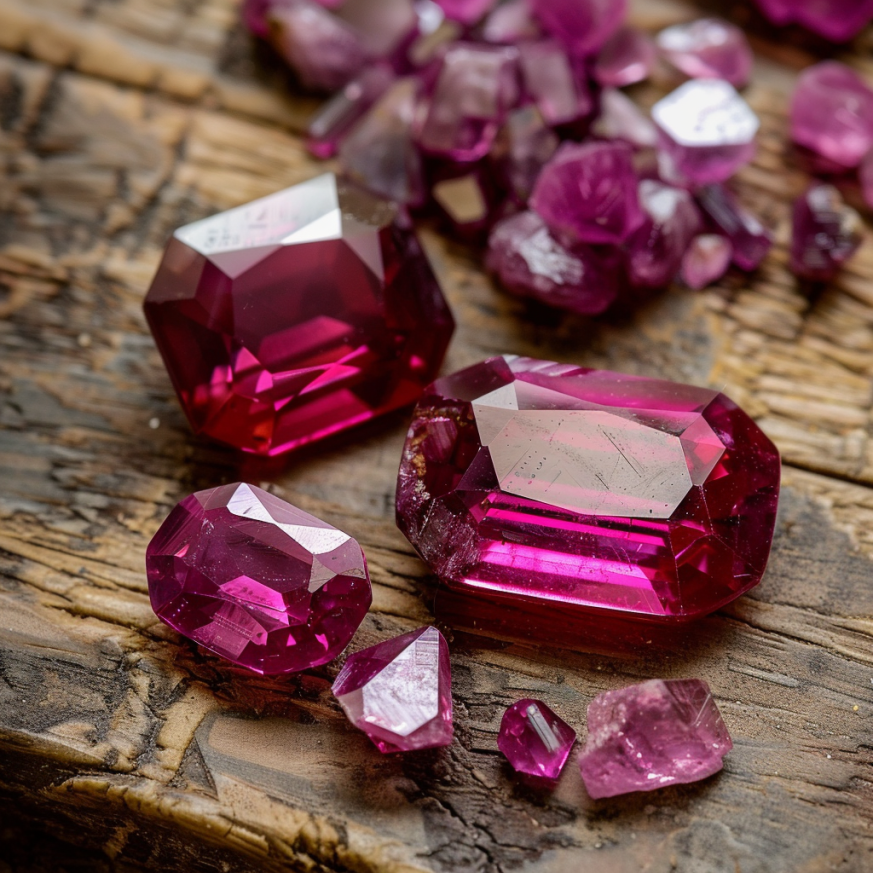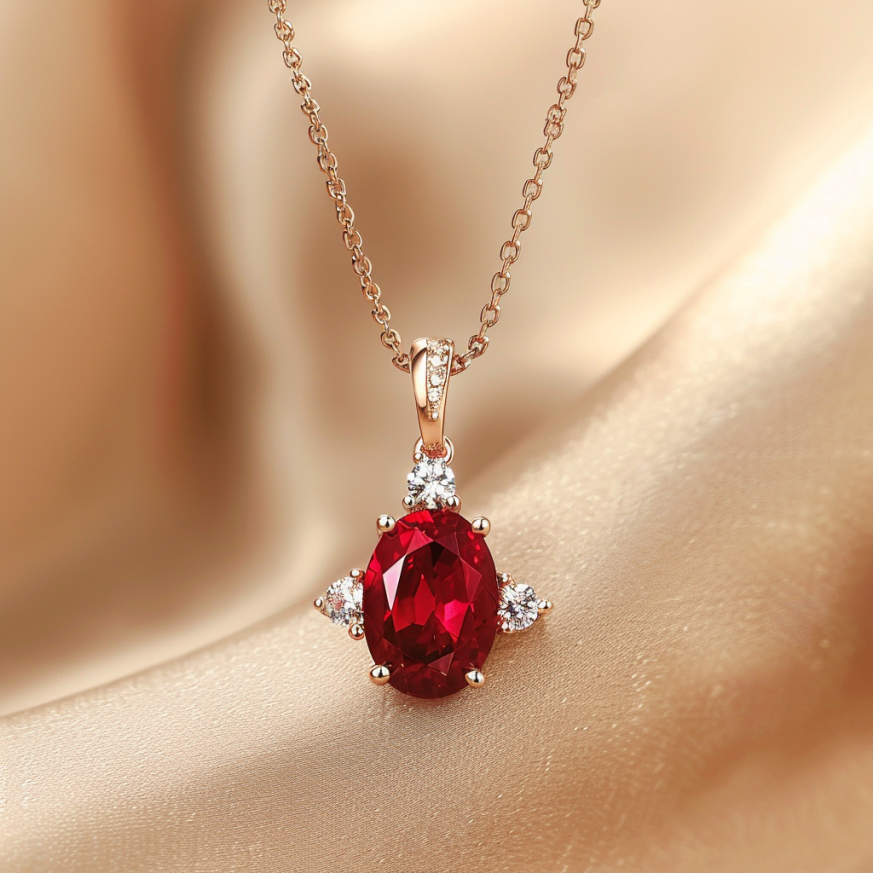Understanding Ruby’s Color
The deep, rich red of a ruby is its most defining characteristic, and understanding ruby’s color is essential in determining its quality and value. Ruby belongs to the corundum family, and its vibrant red hue results from trace amounts of chromium replacing aluminum in its crystal structure. The intensity, tone, and saturation of the color significantly impact the gem’s desirability.

1. The Role of Chromium
The presence of chromium is what gives ruby its iconic red color. Higher chromium content enhances the intensity of the red, while variations in trace elements may introduce subtle secondary hues such as pink, purple, or orange.
2. Color Tone and Saturation
- Tone: This refers to the lightness or darkness of the ruby. The most valuable rubies have a medium to medium-dark tone, as overly light rubies may resemble pink sapphires, while overly dark stones can appear dull.
- Saturation: A ruby with high color saturation appears more vivid and pure, making it more desirable. A well-saturated ruby should not look too brownish or grayish.
J1008| play | medium| middle| “2.44 Ct. Burma (Myanmar) No Enhancement Ruby Brooch”
3. The Coveted “Pigeon Blood” Red
The finest rubies, often from Myanmar, exhibit a pure, rich red color known as “pigeon blood” red. These rubies have intense saturation with a slightly bluish undertone, making them glow vividly, especially under natural light.
R10394| play | medium| middle| “2.55 Ct. Burma (Myanmar) Heat Treated Pinkish Red Ruby”
4. Secondary Hues and Their Impact
Some rubies may display secondary hues like purplish, orangish, or pinkish tones. While slight purplish hues can enhance a ruby’s beauty, excessive orange or brown tones typically lower its value. The best rubies maintain a pure red or slightly purplish-red color.
5. The Influence of Light and Fluorescence
Many high-quality rubies, especially those from Myanmar, exhibit strong fluorescence under ultraviolet light, making them appear even more vivid in sunlight. Rubies with high iron content, such as those from Thailand, may have less fluorescence and appear slightly darker.

Conclusion
Understanding ruby’s color is key to appreciating its beauty and value. The perfect balance of tone, saturation, and fluorescence creates the most sought-after rubies, making them one of the world’s most cherished gemstones.
For more information about Ruby, please visit Why Ruby Is Valuable to understand its significance, rarity, and worth.
